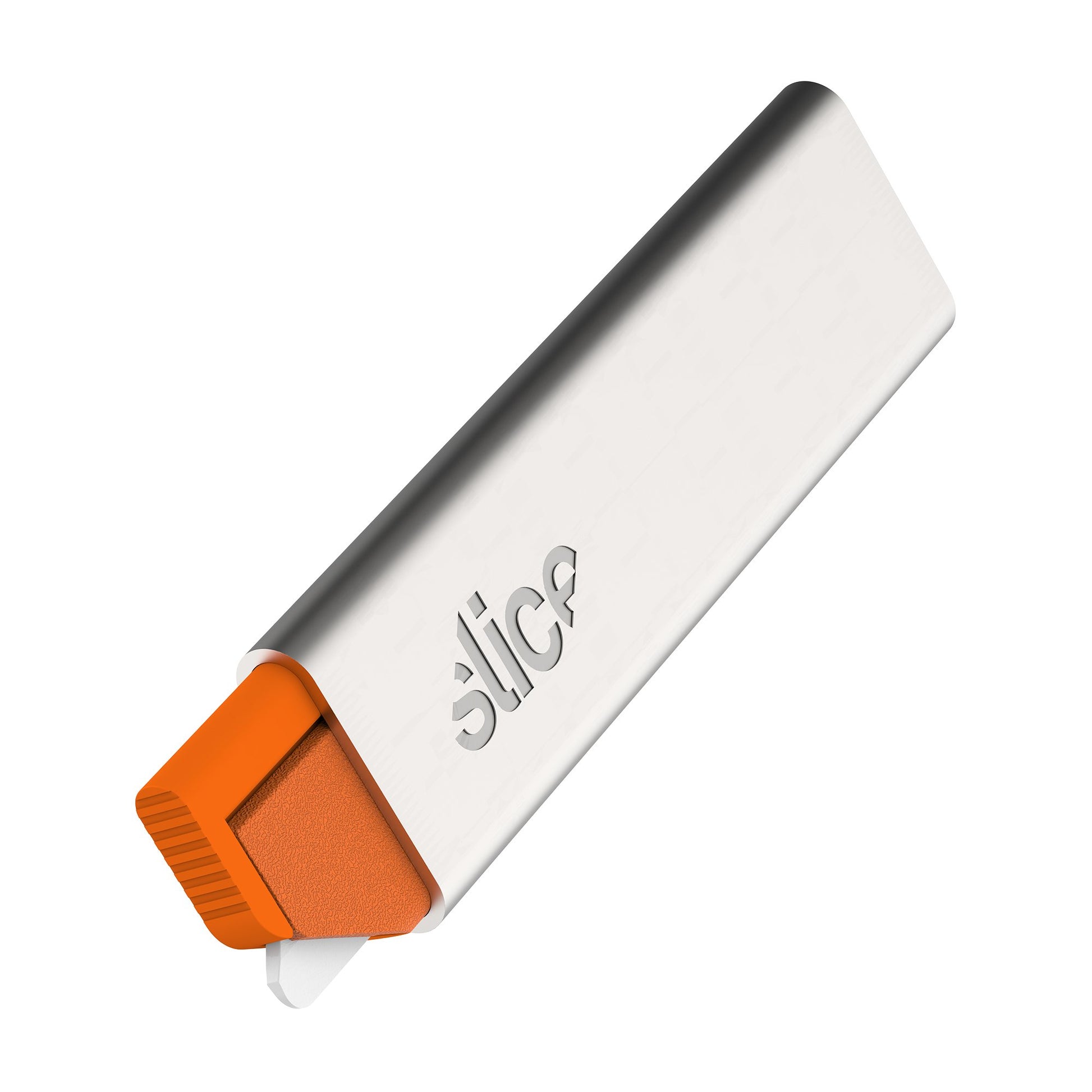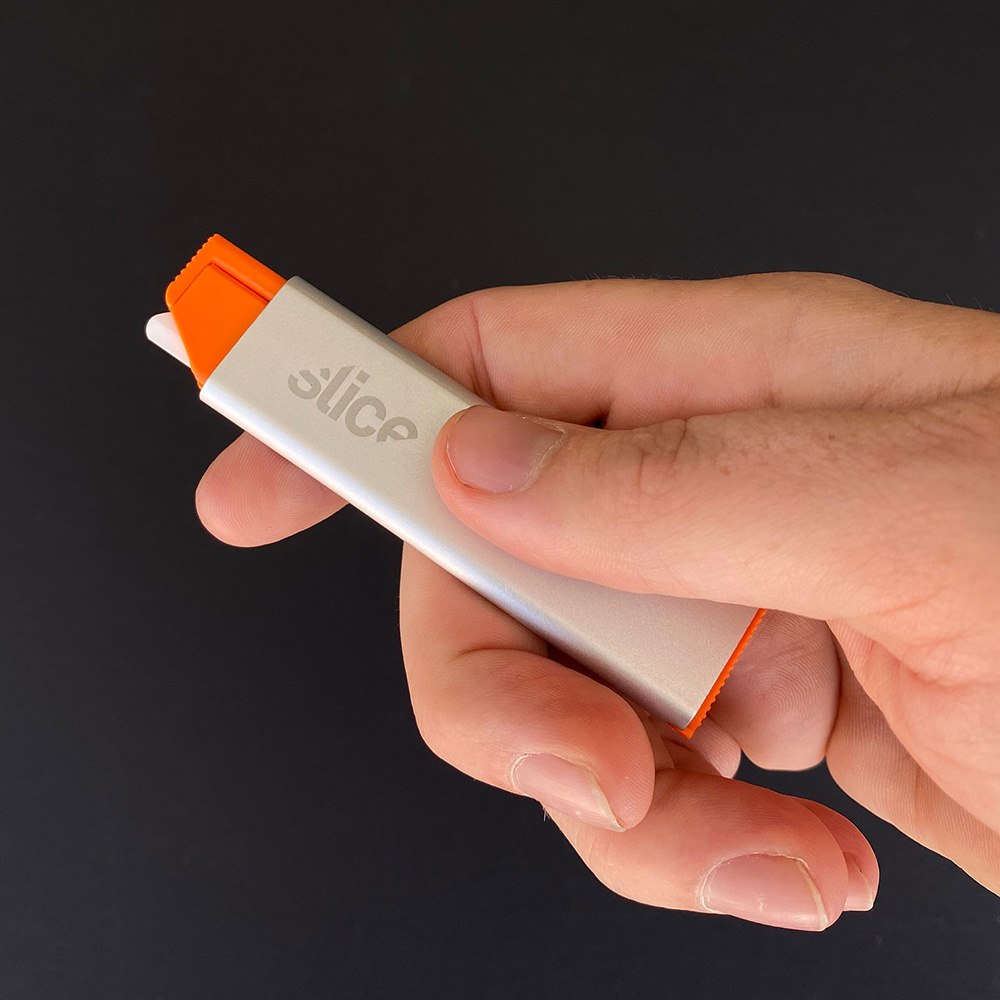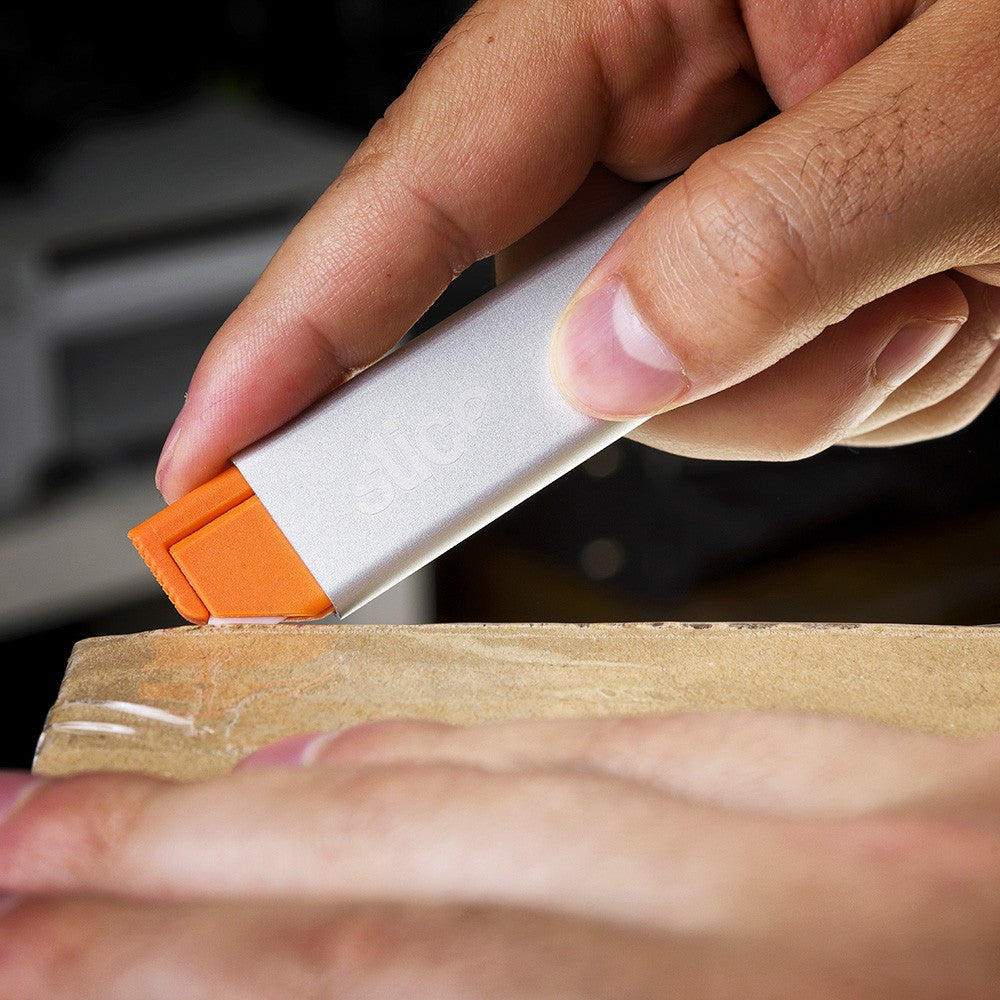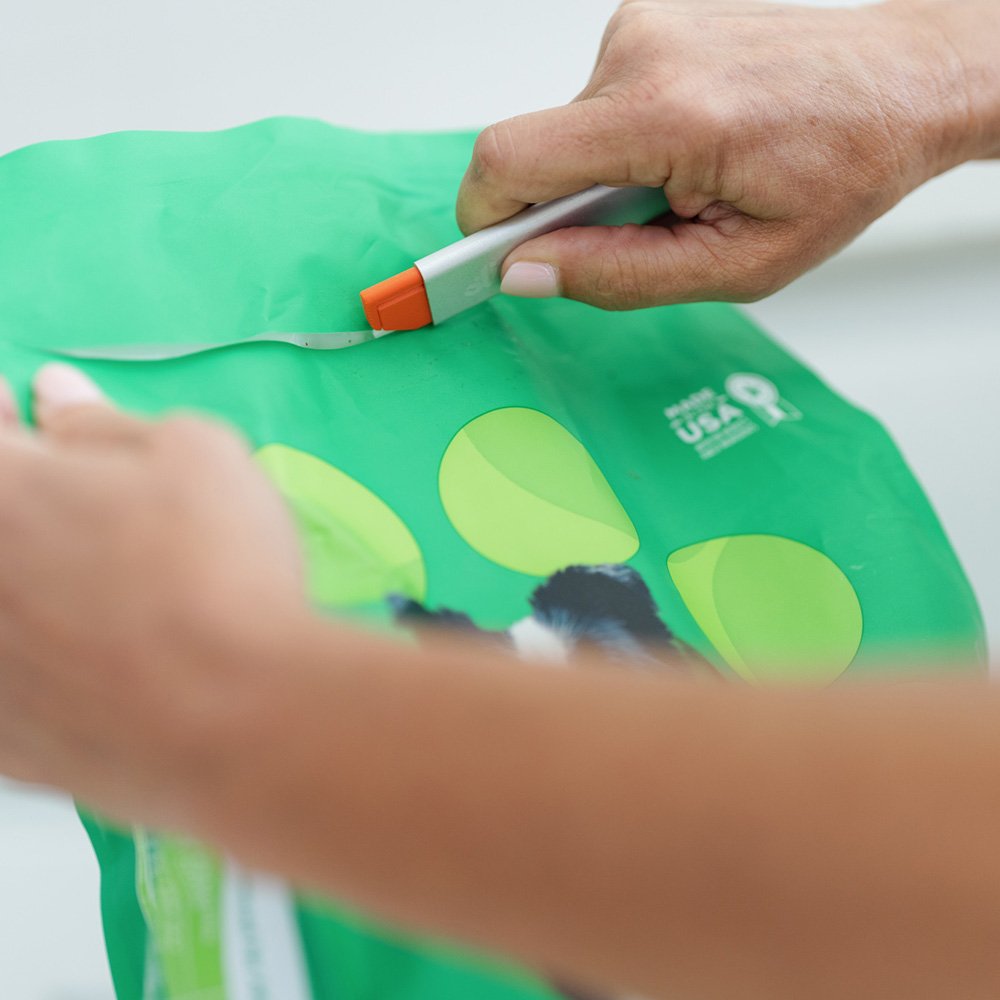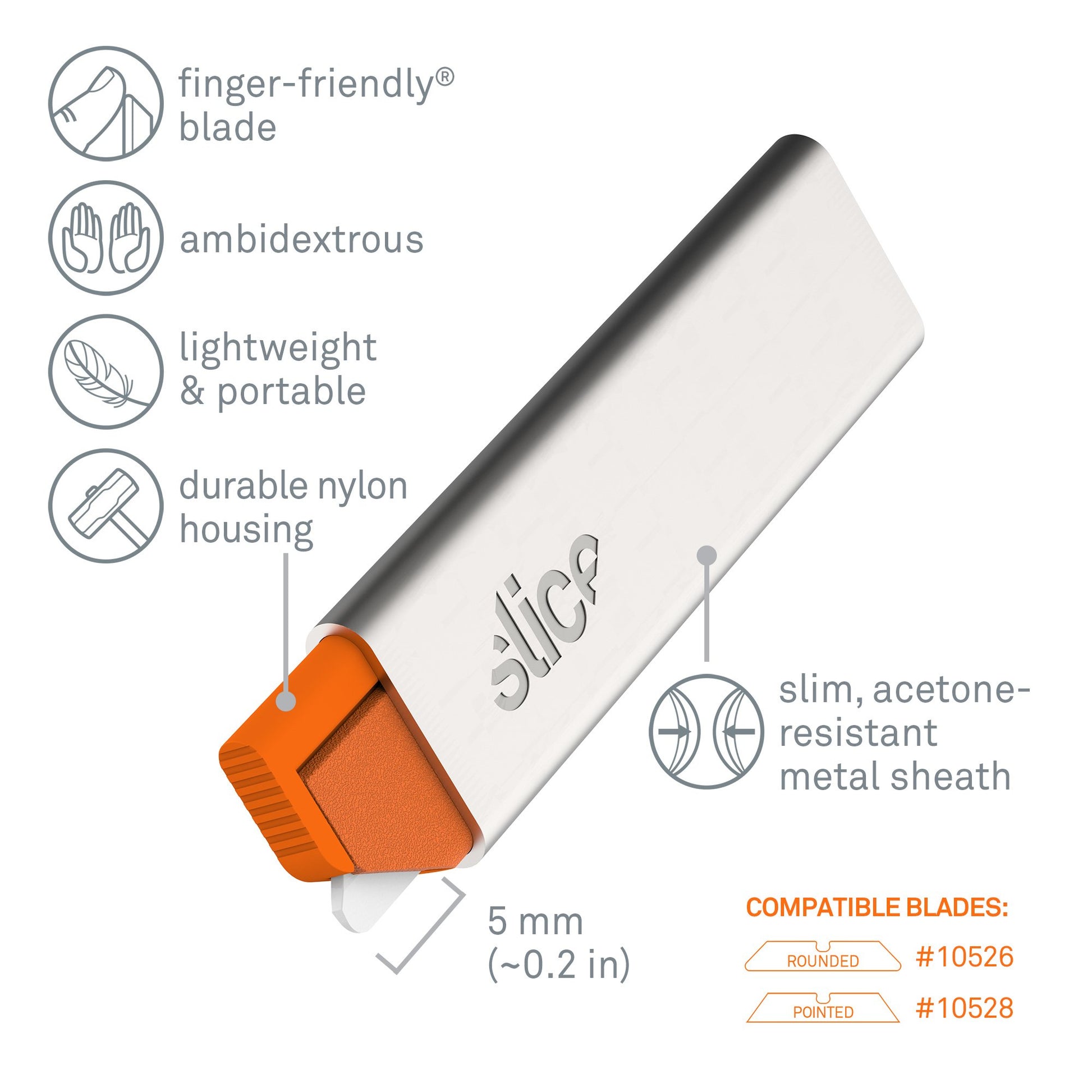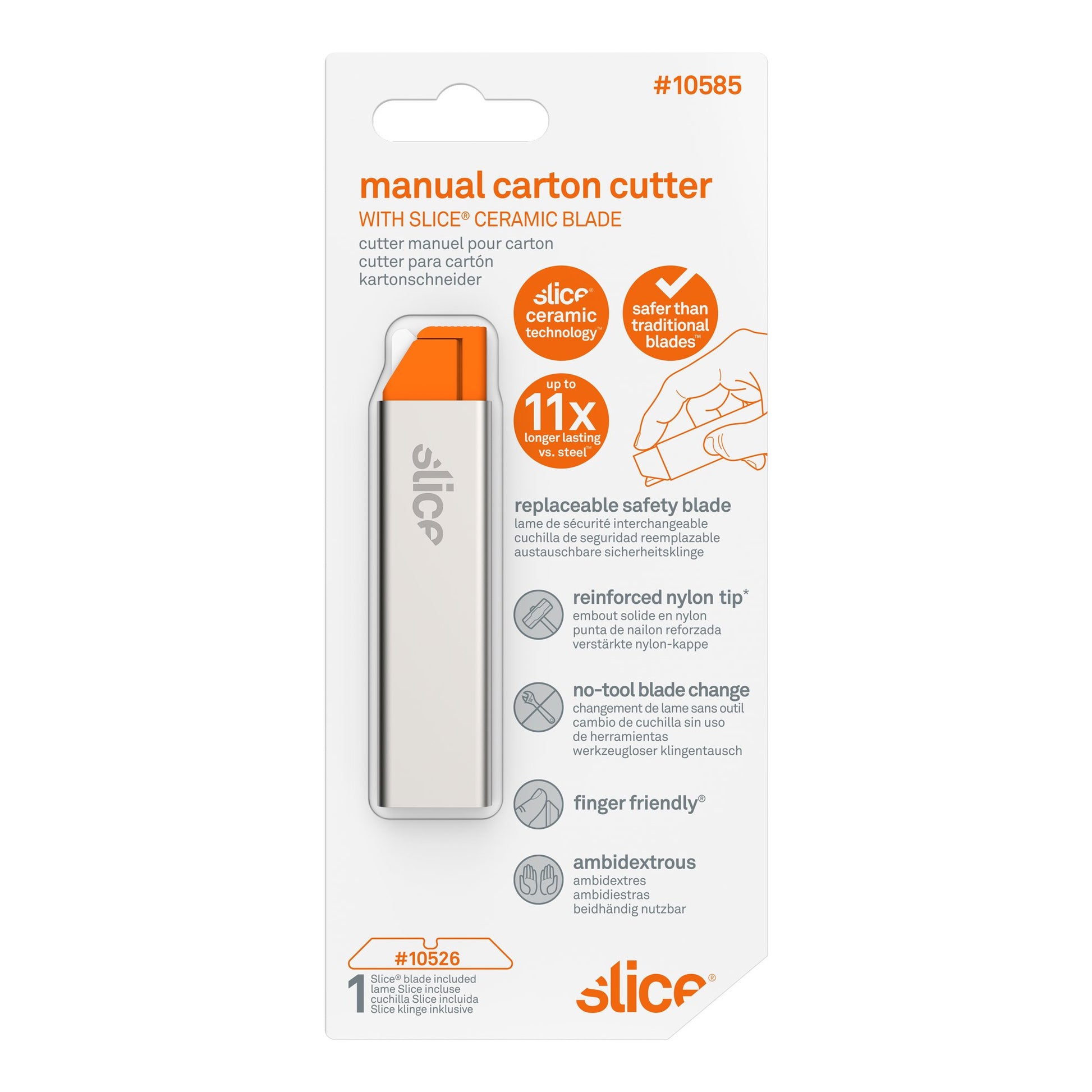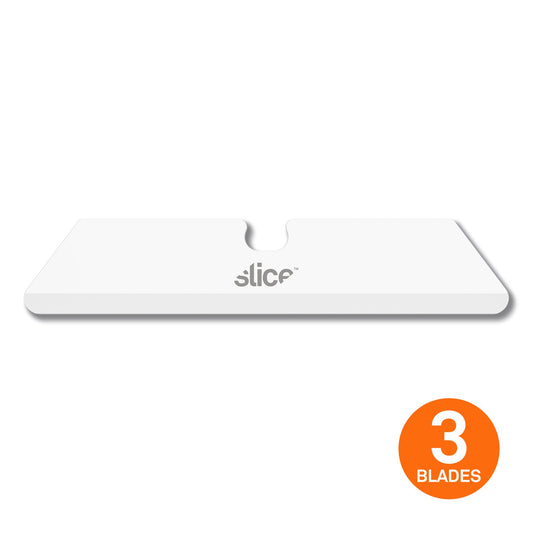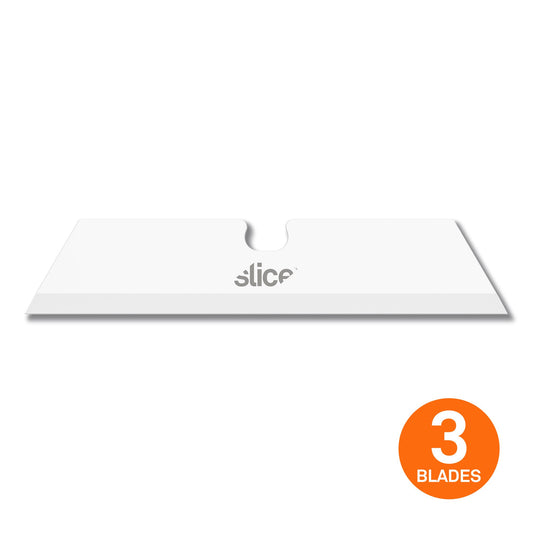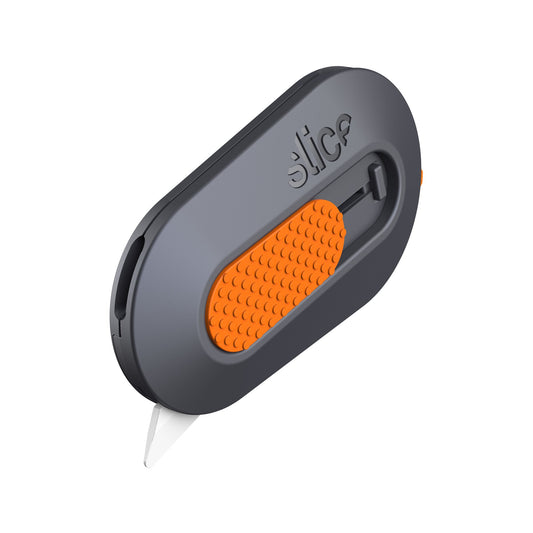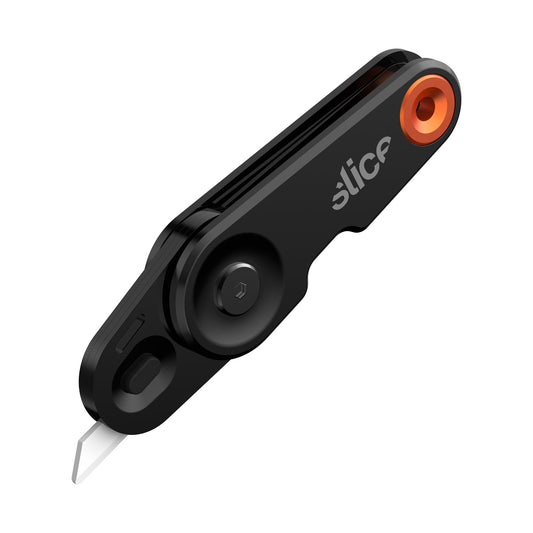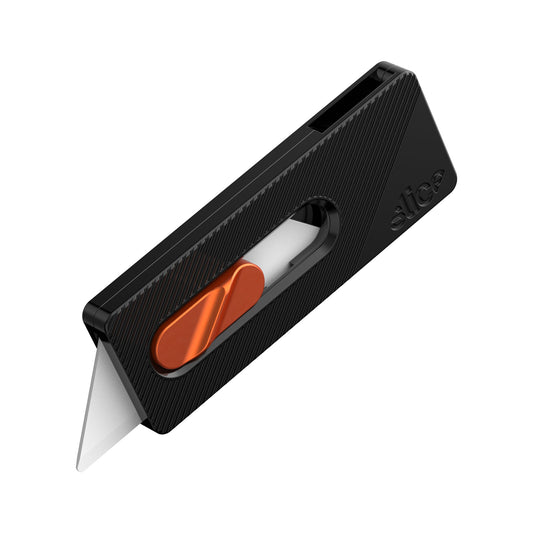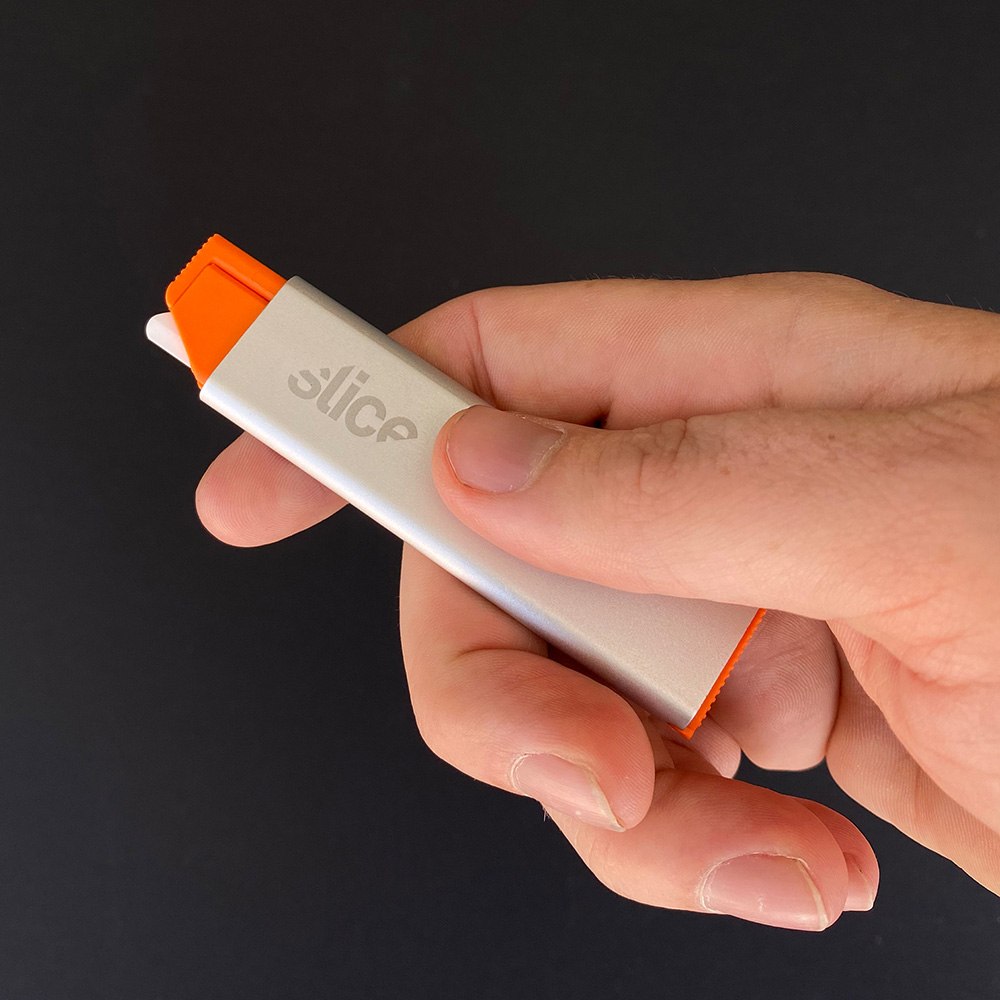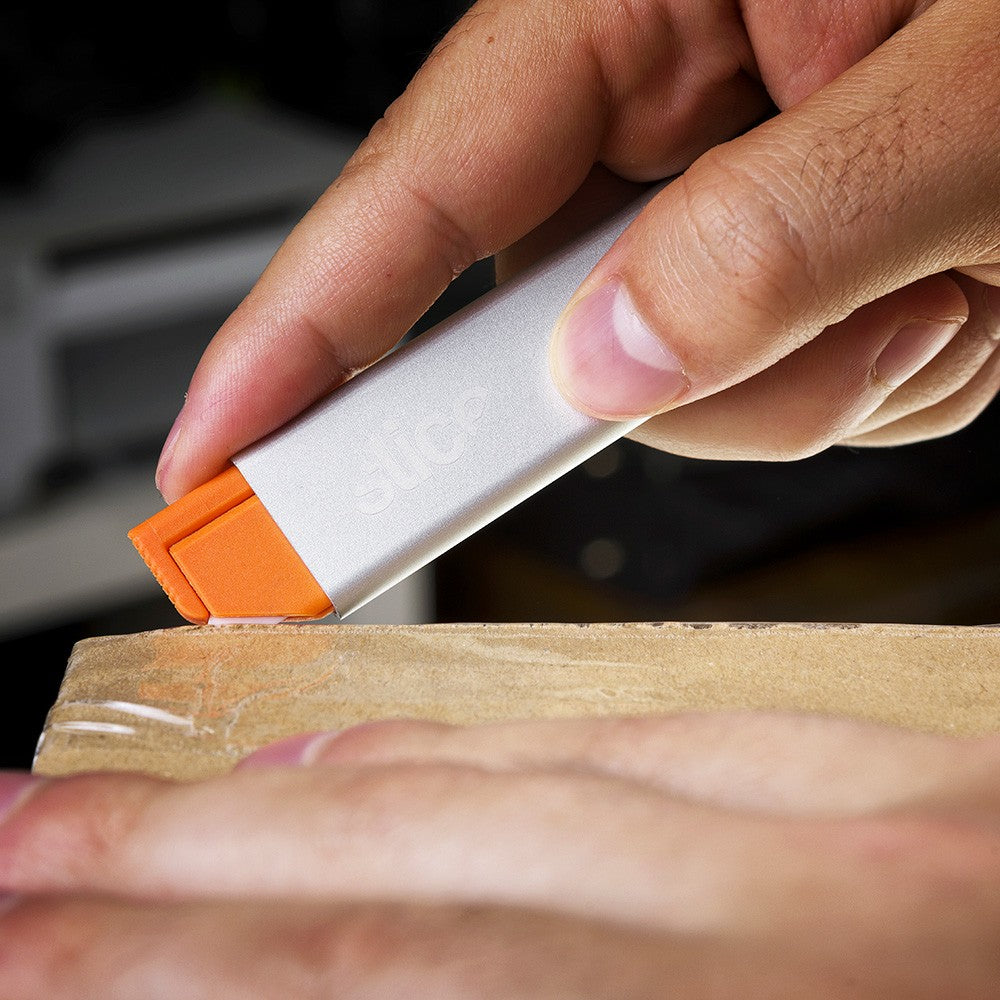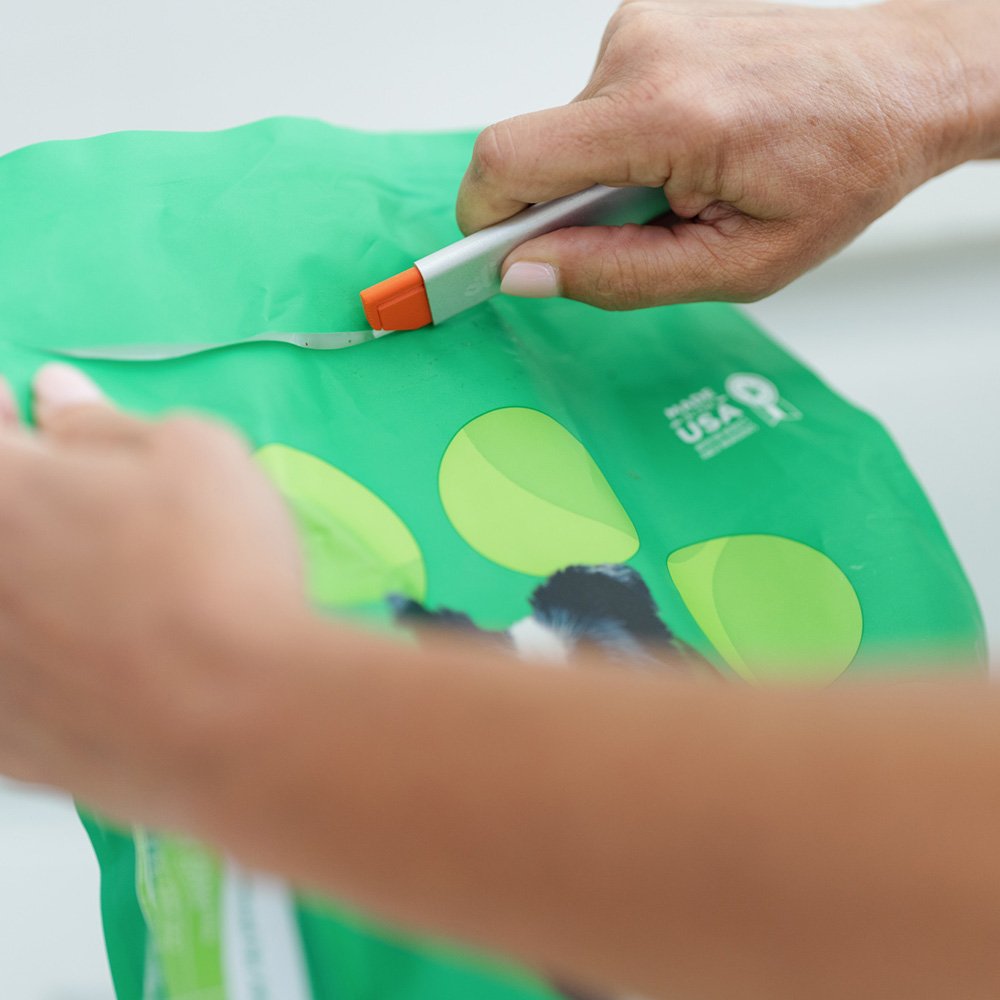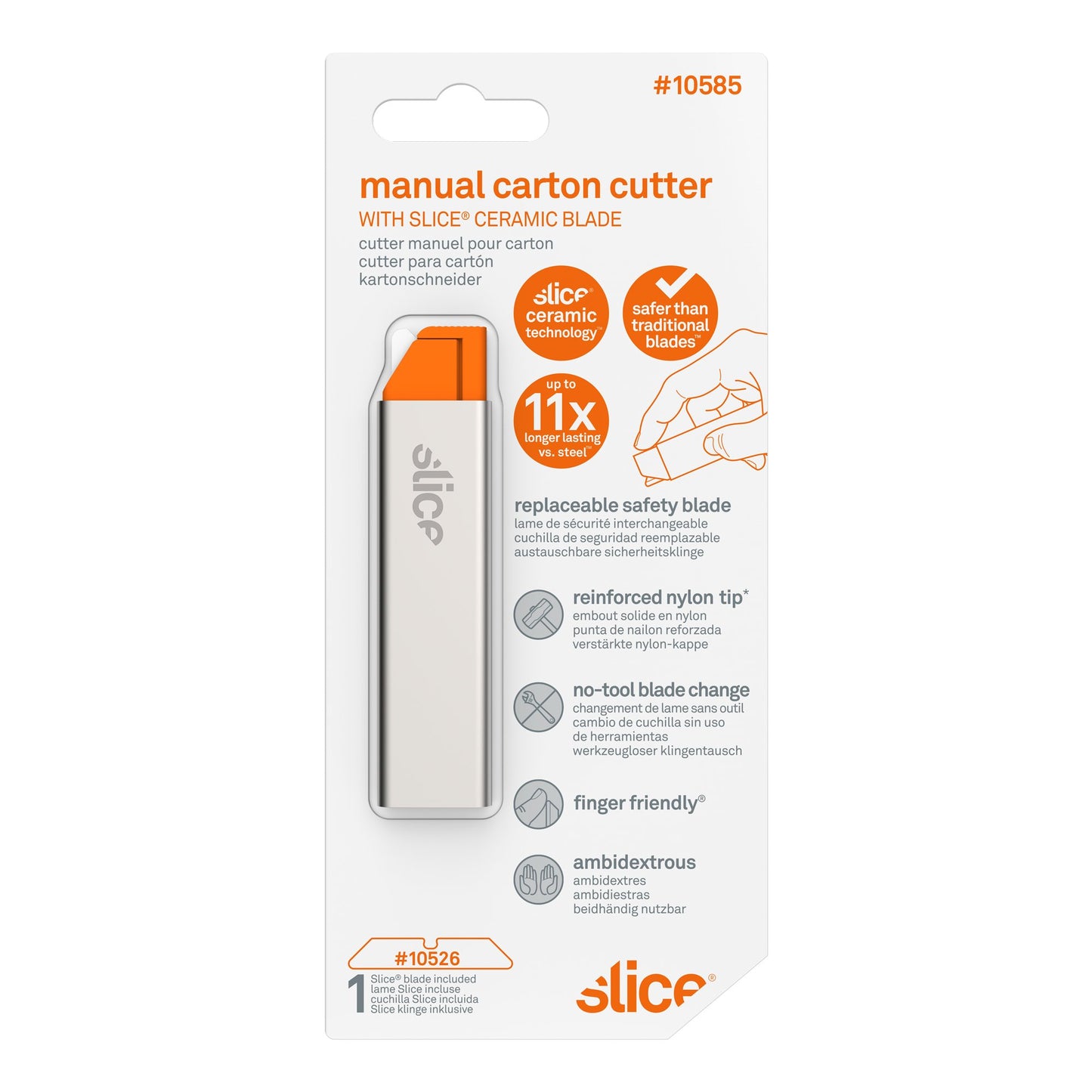安全纸箱割刀
SKU #10585
Slice® 10585安全纸箱割刀是我们安全刀具系列中一款非常实用的补充工具。顾名思义,这款刀具的设计(其外露的刀片长度和角度)非常适合用于纸板和薄瓦愣纸板。Slice安全纸箱割刀 (手动)可将刀片调整至适当的长度来切割,而不用担心损坏包装内容。视所需刀片长度来滑动刀身上的金属保护刀鞘,看是要盖住或是露出多长都行。10585安全纸箱割刀标配圆弧形刀尖的10526安全美工刀片。和Slice所有其它的刀具一样,使用独特的安全刀片,不但具有化学堕性、不生锈的的特性,其使用寿命更较钢制刀片长11倍。
- 安装刀片类型: 圆弧形刀尖
- 坚固耐用的尼龙刀身及抗丙酮材质的金属刀鞘
- 双手通用设计
- 独特安全刀片,既安全又能利落地切割
- 减少伤害,降低成本
- 无火花、不导电、无磁性刀片
- 刀片为化学堕性材质,具不生锈特性
- 刀片无需上保养油,润滑油
- 100%纯氧化锆陶瓷制作
- 刀刃使用寿命较钢制刀刃长11倍
- 更换刀片次数越少 = 伤害越少
- 兼容刀片: 10526, 10528
- 更换刀片无需使用工具
- SKU编号 #10585
Great for:
- Opening boxes, packaging, and shrink wrap
- Slicing cardstock
- Removing coupons from cereal boxes
Product Specifications
Product Specifications
Cutting Depth:
Material: GFN, aluminum, zirconium oxide
Dimensions: L x W x H
Weight: 0.07 lbWhat Customers Are Saying
-
 I buy these knives for my inspection crew at work. Very durable and cut through cardboard easily. I liked them so much I bought a few for home as well.
I buy these knives for my inspection crew at work. Very durable and cut through cardboard easily. I liked them so much I bought a few for home as well.
Charles Wiggins
-
 This thing is a blast. It’s one of those things that feels good when you use it. It glides through the tape on my packages. I love that sensation. I also use it on my small envelopes, vitamin difficult bottles and large envelope packages.
This thing is a blast. It’s one of those things that feels good when you use it. It glides through the tape on my packages. I love that sensation. I also use it on my small envelopes, vitamin difficult bottles and large envelope packages.
Joan
-
 I love this. It’s small & so easy to use. I can’t believe how well it cuts open packages yet it doesn’t feel sharp to the touch. It’s awesome! I bought several & they make great stocking stuffers.
I love this. It’s small & so easy to use. I can’t believe how well it cuts open packages yet it doesn’t feel sharp to the touch. It’s awesome! I bought several & they make great stocking stuffers.
Sue Messing
Videos
-
Replacing Carton Cutter Blades
Compatible Products
FAQ
What Is a Carton Cutter?
Carton is generally considered to be thin (single-walled) corrugated cardboard or non-corrugated cardboard, also known as boxboard. By extension, carton cutters, also known as box cutters, are any tools designed to slice through these materials. When making your selection, keep in mind features that may be a priority in your workplace.
>While many people use utility knives for this purpose and handle designs vary, carton knives typically have a thin, flat rectangular handle with a sheath that slides over the housing to expose or protect the blade. Many use standard metal utility blades while others use (dangerous) snap-off metal blades.These tools are frequently smaller than standard utility cutters and fit easily in the palm of your hand.
>While many people use utility knives for this purpose and handle designs vary, carton knives typically have a thin, flat rectangular handle with a sheath that slides over the housing to expose or protect the blade. Many use standard metal utility blades while others use (dangerous) snap-off metal blades.These tools are frequently smaller than standard utility cutters and fit easily in the palm of your hand.
How Are Slice Carton Cutters Safer?
At Slice® we design everything with safety in mind. This includes handle issues, such as minimizing blade exposure, but also goes much further because: what cuts you, the handle or the blade? All our blades feature our finger-friendly® edge—a safety grind unique to Slice blades. This proprietary double-angle grind cuts through materials effectively but is safe to the touch.
How Do I Change the Blade in the Slice Carton Cutter?
Slice is committed to easy no-tool blade changes and the 10585 is no exception. To change the blade, push the metal sheath into its protective blade-covering position. Then remove the orange housing by pulling it further down until the sheath is completely removed. Open the housing by pulling up the cover along the lengthwise, unhinged edge, just as you would a book. The old blade simply lifts out.
Ensure that the new blade lines up with the notch in the housing and close the housing. Before you slide the metal sheath back on, check for the notch on the bottom of the sheath. Line up the blade with this notch and slide the housing back in. This will ensure that the stopper on the housing lines up with the notch on the sheath, limiting how far down the sheath can slide.
Ensure that the new blade lines up with the notch in the housing and close the housing. Before you slide the metal sheath back on, check for the notch on the bottom of the sheath. Line up the blade with this notch and slide the housing back in. This will ensure that the stopper on the housing lines up with the notch on the sheath, limiting how far down the sheath can slide.

